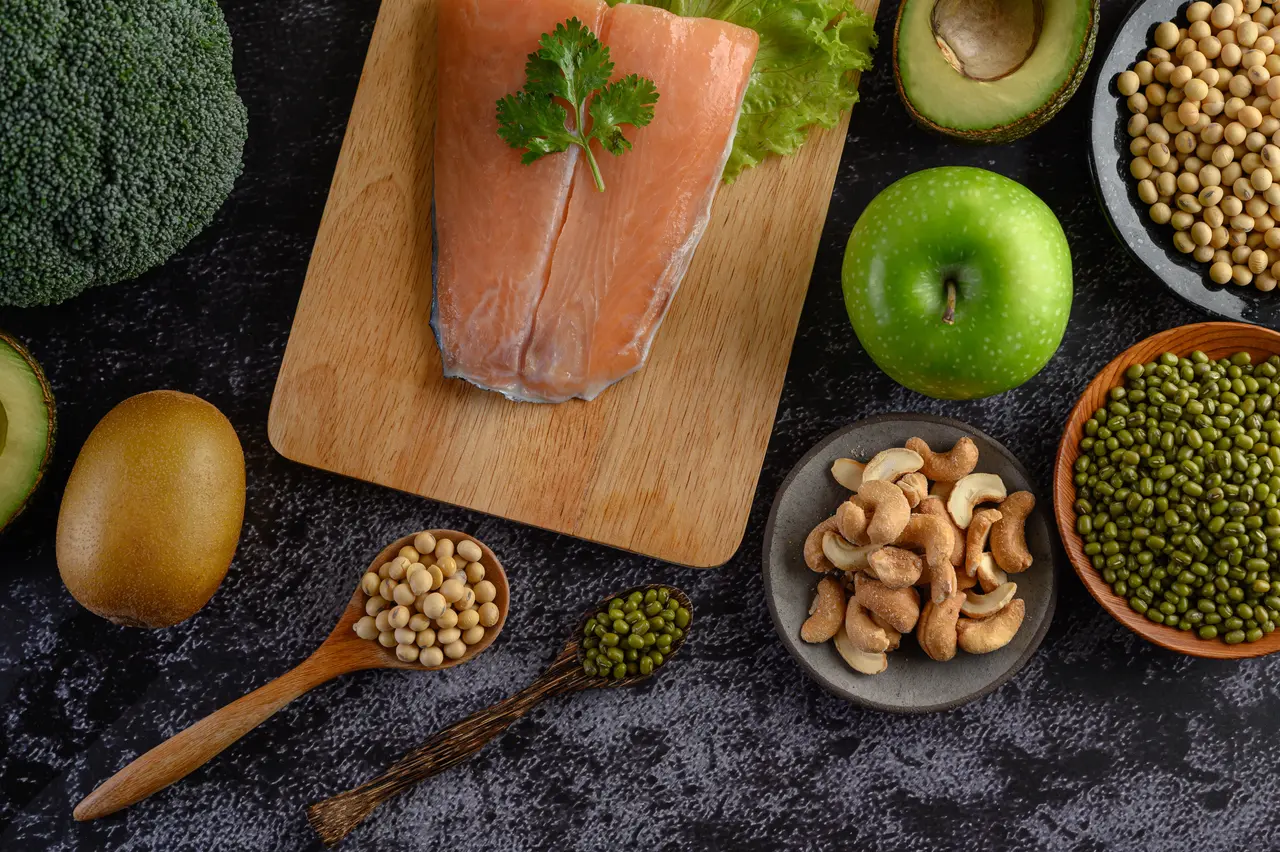Expect about 2 lb for most beginner men, 1 lb for beginner women, and ~0.5 lb if you have spent a few years in the gym. PEDs can push it higher, but that’s not our lane.
This guide shows exactly how to use 30 days well: muscular tension, a small calorie surplus, enough protein, and real recovery. No magic. Just measurable muscle.
Want to squeeze the most out of the next 30 days? ⬇️
🏋🏻♂️Train with our coaches or book a consultation
How much muscle can you realistically gain in one month?
Let’s kill the “10 pounds in 30 days” fantasy. Most of that is water and glycogen and sadly body fat, not contractile tissue. Real, drug-free muscle is slower, but still absolutely worth chasing.
Maik’s breakdown:
- Male beginner: ~2 lb (≈0.9 kg)
- Female beginner: ~1 lb (≈0.45 kg)
- Advanced lifter: ~0.5 lb (≈0.2 kg)
With performance enhancers: up to ~4 lb (≈1.8 kg) in a month. This way isn’t natural, sustainable, and comes with different risks.
Factors that determine monthly results
Muscle is built where training stress, nutrition, and recovery meet. If one leg of that triangle is weak, your results stall.
There are several crucial factors affecting muscle growth in one month. Here, we will break down each factor to better understand how muscles work.
Training Program
You don’t build muscle by showing up. You build it by applying tension on your muscles—lifting in good form heavier, doing more reps, or increasing volume week over week.
What works:
- Resistance training with progressive overload – If you benched 135 for 8 reps last week, aim for 9 this week or add 5 pounds. Your body adapts to stress. No new stress = no new growth. Disclaimer: if your form goes to shit for the extra reps, you are wasting your time and setting yourself up for an injury.
- Volume and intensity – Most people need 8-10sets per muscle group per week, provided they train close to failure. Too little and you’re just maintaining. Too much and you’re spinning your wheels without recovery.
- Proper recovery between sessions – Hammering chest six days a week doesn’t work. Muscles grow during rest, not during the workout. Hit each muscle 2x per week with at least 72 hours between sessions.
If your program doesn’t have a clear progression plan, you’re guessing. And guessing doesn’t build muscle.
Nutrition

Training sends the impulse to build muscle. Food is the building block for any type of cell.
The non-negotiables:
- Caloric surplus: You need ~250–500 extra calories per day above maintenance to fuel growth. Eating at maintenance or in a deficit? You’re not giving your body the raw materials it needs.
- Sufficient protein: 1.6–2.2 g/kg of body weight daily. For a 180 lb guy, that’s roughly 130–180g of protein. Chicken, fish, eggs, Greek yogurt, steak—real food beats powders every time.
- Set your carbs around 4 grams per kg of bodyweight, fat around 1 gram. If you are not gaining weight after four weeks, increase those numbers for 20%.
- Nutrient timing and meal quality: Spread protein across 3–5 meals. Eat carbs around training to fuel performance and recovery. Skip the processed garbage that spikes insulin and crashes energy.
You can’t out-train a bad diet. Period.
Sleep and Recovery
This is where most people leave gains on the table.
You’re not building muscle in the gym. Growth happens when you sleep, rest, and let your nervous system recover.
What you need:
- 7–9 hours of quality sleep per night: Sleep is when growth hormone peaks and protein synthesis happens. Less than 7 hours? You’re shortchanging yourself. .
- Managing stress and avoiding overtraining: Chronic stress floods your system with cortisol, which eats muscle and stores fat. If you’re training hard but sleeping poorly, stressed at work, and skipping rest days, you’re going backward.
Recovery isn’t lazy. It’s strategic.
Genetics
Honestly, some people respond better to training than others.
These are called “hyper responders”. People who pack on muscle faster, recover quicker, and see results with less perfect execution. Then there are average responders and low responders.
You can’t change your genetics. But you can maximize what you’ve got by dialing in training, nutrition, and recovery. Even “low responders” build muscle, they just need more precision and patience.
Stop comparing yourself to the genetic lottery winners ( and often drugged up athletes) on Instagram. Compare yourself to last month’s version of you.
Supplementation (optional, not essential)
Supplements don’t replace the basics. But a few can give you a measurable edge.
What actually works:
- Creatine monohydrate: 5g daily. Increases strength, power output, and muscle cell hydration. Cheap, safe, and backed by decades of research.
- Whey protein: Convenient, not magic. If you’re hitting your protein target with whole food, you don’t need it. If you’re short, it’s a fast fix.
Everything else? Marketing. Save your money and buy better food or hire a great coach.
Setting realistic goals when gaining muscle
Most people set themselves up to fail before they even start.
They compare month one to someone’s year three. They expect Instagram transformations in 30 days. Then they quit when reality doesn’t match the highlight reel.
Your timeline depends on where you’re starting from.
Beginners get the fastest visible progress
If you’re new to lifting or even coming back after a long break, you’re in the sweet spot. Your body is hypersensitive to training stimulus. You’ll see changes faster than anyone else.
What to expect in month one:
- Strength jumps weekly (sometimes session to session)
- Muscle definition starts showing through
- Your body learns movement patterns and recruits muscle fibers more efficiently
- You might gain 1–2 lbs of actual muscle tissue
This is your window. Don’t waste it on inconsistent training or half-assed nutrition. Beginners who dial in the basics see results that make advanced lifters jealous.
Advanced lifters see smaller gains—and that’s normal
Been lifting seriously for 2+ years? Your body isn’t shocked by the gym anymore. You’ve already built most of your “easy” muscle.
Now you’re fighting for fractions. ~0.5 lb per month might not sound exciting, but over a year, that’s 6 pounds of pure muscle. In the natty game, that’s enormous.
Shift your focus:
- Performance over appearance – Can you add 10 lbs to your bench? Hit one more rep at the same weight and form? That’s progress.
- Precision over volume – You can’t out-work bad recovery anymore. Dial in sleep, nutrition, and deload weeks.
Advanced lifters who stay consistent for years build physiques that stand out in any room. It’s just slower. Accept it and keep moving.
Define short-term wins that actually matter
The scale is one data point. It’s not the whole story.
If you’re only tracking bodyweight, you’re missing the real wins that keep you motivated and signal progress.
Track these instead:
- Strength gains: Did your squat go up 10 lbs? Did you hit 3 more reps at the same weight? That’s growth.
- Visual changes: Take weekly photos in the same light, same pose. Compare month to month, not day to day.
- Measurements: Chest, arms, waist, thighs. Muscle takes up less space than fat. You can look leaner and weigh the same.
- Habit building: Did you train 4x this week? Hit your protein target 6 out of 7 days? Consistency is the real win.
Muscle doesn’t show up overnight. But if you’re getting stronger, eating right, and showing up consistently, it’s coming.
Set goals you can measure every week. Celebrate small wins. Stack them for 30 days. That’s how you build momentum and muscle.
Kickstart your 30-day challenge with our expert coaches
| Experience level | Expected gain in 1 month | Notes |
| Male beginner | ~2 lbs (0.9 kg) | Fastest “newbie gains” |
| Female beginner | ~1 lb (0.45 kg) | Noticeable strength gains possible |
| Advanced athlete | ~0.5 lb (0.2 kg) | Marginal progress requires precision |
| With performance enhancers | ~4 lbs (1.8 kg) | Not natural, not sustainable |
Common Myths About Muscle Growth
The internet is full of bad advice. These two myths cost people the most progress:
Myth No. 1: “You can gain 10 pounds of muscle in a month.”
Not unless you’re on a pharmaceutical protocol, and even then, most of that weight is water, glycogen, and some fat. The other option would be that you have been very ill and are regaining old muscle mass. After I came out of covid, I was down to 180 lbs from previously 230 lbs. Once healthy, I regained the weight quickly but stopped at 230 lbs… my old weight.
Real muscle tissue accumulates slowly. If someone’s selling you 10 pounds in 30 days, they’re either lying or redefining what “muscle” means. Water weight from creatine and a massive carb load can add 5+ pounds to the scale without adding contractile tissue.
Track the right metrics. Don’t fall for scale tricks.
Myth no2: “Lifting heavy alone builds muscle”
Heavyweight matters….somewhat. But what really matters is: what lifts the weight? Is it your target muscle or the joints, ligaments and momentum? In that case you are just moving weights, but you are not training your muscles ergo they will not grow. Period.
You can lift 90% of your max for singles all month and barely grow. Why? Because total volume (sets × reps × load) drives hypertrophy. You need enough stimulus across enough sessions to force adaptation. Besides, singles and doubles are very hard on the CNS, so the added cortisol output will cause you to lose muscle.
A guy doing 15 sets per muscle group per week at moderate weight will outgrow someone doing 3 heavy sets once a week. Every time.
Progressive overload isn’t just adding weight. It’s adding something while maintaining good form. That could reps, sets, or frequency over time while recovering properly.
📈 Pro Tip for Accurate Tracking
The scale lies. It doesn’t tell you what you gained. Muscle, fat, water, or glycogen?
If you want real data, use these instead:
- Body composition testing: DEXA scans, Is the gold standard all the other devices will give a trend at best but not a definite number.
- Strength increases: Did your lifts go up? Then you’re building muscle or improving neuromuscular efficiency. Both count as progress.
- Progress photos: Same lighting, same time of day, same pose. Compare weekly. Your eyes catch what the scale misses. Upload those pics on ChatGPT for unbiased feedback.
- Tape measurements: Chest, arms, waist, quads. If your arms grow half an inch and your waist shrinks, that’s a win, even if the scale doesn’t move.
Track multiple data points. One month of solid numbers beats years of guessing.
Wrapping all Up
One month can deliver visible progress. It won’t deliver miracles.
You’re not going to look like a completely different person in 30 days. But you can absolutely get stronger, leaner, and more consistent. You can build habits that compound. And you can lay the foundation for real, sustainable muscle growth over the next 6–12 months.
I’ve trained Olympic athletes, Wall Street executives, and complete beginners. The ones who succeed aren’t the ones chasing quick fixes. They’re the ones who show up, follow a real program, and trust the process.
Consistency beats intensity. Science beats trends. And 30 days of smart training beats years of guessing.
If you’re ready for real results backed by science, start training with us today!
FAQ
Maik’s stance: Men ~2 lb (0.9 kg), women ~1 lb (0.45 kg), advanced lifters ~0.5 lb (0.2 kg). With performance-enhancing drugs (PEDs), up to ~4 lb—not natural or recommended. Anything above these ranges is usually water/glycogen (and sometimes fat), not new contractile tissue.
Consistency + progressive overload, a small calorie surplus (+250–500 kcal/day), protein at 1.6–2.2 g/kg body weight, and sleep (7–9 hours) drive results. Good exercise selection, appropriate volume/intensity, low stress, and individual genetics also matter. Track with photos, tape, and strength logs—not the scale alone.
Most beginners notice strength increases within 2–4 weeks and subtle visual changes in shoulders, back, and legs by week four. Early scale bumps are often water/glycogen from better fueling. Use progress photos, measurements, and rep/weight PRs to confirm progress in the first month.
Supplements support results but don’t beat Maik’s benchmarks (~2 lb men, ~1 lb women per month). Creatine monohydrate is the only legal supplement with a proven track record of muscle building. Whey protein helps you hit protein targets; caffeine can aid performance. Beta-alanine is marginal for hypertrophy. No legal supplement replaces training, dialed in nutrition, and sleep.
Follow a structured plan where you hit each muscle twice a week, think 10 sets per muscle group per week. Train close to failure on each set, try to add a rep or a bit of weight each week while maintaining form. Eat a tight surplus (+250–500 kcal), hit protein (1.6–2.2 g/kg), time carbs around training, and sleep 7–9 hours. Manage fatigue (skip junk volume, deload if needed) and track weekly so you can adjust quickly.

Maik Wiedenbach is a Hall of Fame swimmer turned bodybuilding champion and fitness model featured in Muscle & Fitness and Men’s Journal. An NYU adjunct professor and award-winning coach, he founded New York’s most sought-after personal training gym.

